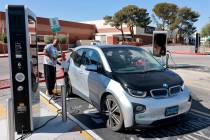Obama’s cap-and-trade plan a wolf in sheep’s clothing
President Barack Obama has been shockingly upfront about his heavy-handed plans to govern energy production across the country from Washington, D.C. His plan is known as cap-and-trade, but it amounts to a new national energy tax that will be detrimental to consumers' pocketbooks at the worst possible time.
President Obama noted that "under my cap-and-trade plan, electricity prices would necessarily skyrocket" and his Budget Director, Peter Orszag, testified before Congress that under this program "firms would not ultimately bear most of the costs of the allowances but instead would pass them along to their customers in the form of higher prices ... price increases would be essential to the success of a cap-and-trade program."
So we know the president's plan would raise significant revenues -- otherwise known as taxes -- paid by consumers. The question is: What will this cost the consumer?
An MIT study looked at a cap-and-trade scheme that closely tracked the president's proposal and projected revenue of $366 billion in a single year. To calculate the impact on families, we divided the revenue by the number of U.S. households to get a new tax burden of about $3,000 per family. That is a straightforward way to evaluate the tax burden per family.
Recently an employee of MIT accused Republicans of overestimating the per- household figure. The number we calculated, however, was lower than the one published in MIT's own study. Using an alternative household number, MIT estimated that $366 billion in revenue would equate to an astonishing $4,560 per family of four.
The MIT study assumed all revenues raised would be rebated back to consumers (and even after a 100 percent rebate, according to a letter they sent to Congress, they apparently conclude that energy costs would still increase by $340 a year).
It is unlikely, however, that consumers will see significant rebates from Uncle Sam because history has shown us that Washington will find ways, too often wasteful, duplicative and inefficient ways, to spend your money.
The President's Budget, perhaps not coincidentally, projected the exact amount of revenue from cap-and-trade necessary to pay for a $15 billion a year slush fund for clean energy and an unrelated campaign promise, the Making Work Pay tax credit. Even if the family of four envisioned by the MIT study qualified for the Making Work Pay credit, it would still be worse off by $4,100 ($4,560 minus $800 plus $340).
During the recent budget debate, it became clear that senators have many different designs on the revenue that would be raised by cap-and-trade. In fact, media reports suggest that the revenue could be used for their government-controlled health care plan.
The bottom line is that our country would face a massive tax increase adding up to some $3,000 per household per year -- or $4,560 per family of four, if you prefer. American consumers would pay more just for turning their lights on, keeping their homes warm, and driving their cars. And because energy is an input for other goods and services, Americans would have to pay more to feed their families and put clothes on their backs.
If you think thousands of dollars in a new energy tax is going to end up in your pocket instead of being spent on big government programs and special interests, you haven't been watching the way Washington works lately.
My job as your representative in the Senate is to determine what this ambitious government expansion will cost you, the American taxpayer. I've long been committed to fiscal discipline and, based on what I have seen so far, this plan amounts to the government picking winners and losers and more redistribution of wealth.
John Ensign, a Republican, represents Nevada in the U.S. Senate.

















